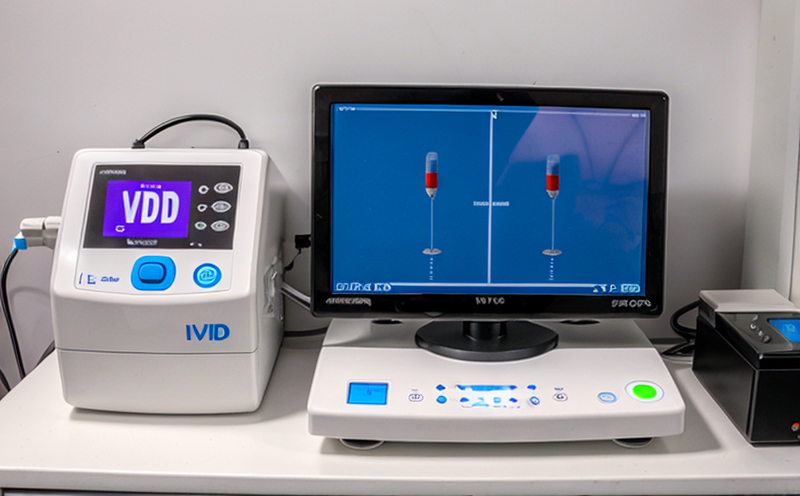Lot-to-Lot Consistency Testing for IVD Devices
Lot-to-lot consistency testing is a critical aspect of ensuring the reliability and accuracy of In Vitro Diagnostic (IVD) devices, which play an essential role in medical diagnosis and patient care. Lot-to-lot variability can significantly impact clinical outcomes if not properly managed, as it can lead to discrepancies in test results between batches or lots produced by the same manufacturer. This testing ensures that each batch consistently meets the performance standards set forth by regulatory bodies such as the FDA and ISO 17895:2016.
The process involves comparing the performance characteristics of multiple lots of IVD devices to ensure they are within acceptable limits for accuracy, precision, linearity, and other relevant parameters. This helps in identifying any potential variations that might arise due to manufacturing differences or batch-to-batch inconsistencies. By conducting this test, manufacturers can demonstrate compliance with regulatory requirements and provide confidence to healthcare providers and patients.
For quality managers and compliance officers, lot-to-lot consistency testing is crucial for maintaining high standards of product quality and ensuring consistent performance across different production batches. R&D engineers benefit from this testing by being able to refine their processes and materials to minimize variability. Procurement teams can use the results to evaluate suppliers' consistency and reliability in meeting specified technical requirements.
The test typically involves several steps, including specimen preparation, instrument calibration, and data analysis. Specimens are prepared according to standard operating procedures (SOPs) that ensure uniformity across different lots. Instruments used for testing must be calibrated regularly to maintain accuracy and precision. Data collected from these tests is analyzed using statistical methods to determine compliance with predefined acceptance criteria.
Compliance with international standards such as ISO 17895:2016 ensures consistent quality across all batches produced by a manufacturer, which is essential for maintaining patient safety and efficacy of diagnostic results. This standard provides guidelines on how to perform lot-to-lot consistency testing effectively, ensuring that the tests are conducted under controlled conditions and interpreted correctly.
Manufacturers who invest in robust lot-to-lot consistency testing programs can gain several advantages. These include enhanced customer trust through consistent product performance, reduced risk of adverse events due to batch variability, streamlined regulatory submissions by demonstrating compliance with relevant standards, and improved reputation among healthcare professionals who rely on accurate diagnostic tools.
Understanding the importance of this testing is crucial for those involved in the development, manufacturing, and use of IVD devices. By focusing on lot-to-lot consistency, stakeholders can ensure that every batch meets stringent quality requirements, thereby contributing to better patient outcomes and overall healthcare delivery.
Benefits
Enhances customer trust by ensuring consistent product performance across different lots.
Reduces the risk of adverse events due to batch variability, which can impact patient safety and efficacy.
Streamlines regulatory submissions by providing clear evidence of compliance with relevant standards.
Improves reputation among healthcare professionals who rely on accurate diagnostic tools.
Quality and Reliability Assurance
Lot-to-lot consistency testing is integral to quality assurance programs aimed at maintaining high standards of product reliability. By identifying any variations in performance characteristics between different lots, manufacturers can take corrective actions to standardize processes and materials used during production. This not only ensures consistent quality but also enhances the overall reliability of IVD devices.
Quality managers play a vital role in overseeing these tests, ensuring that all steps are followed meticulously according to established protocols. They must stay updated with the latest regulatory requirements and best practices for conducting such tests effectively. Compliance officers contribute by reviewing test results and ensuring they meet specified criteria before approving release of new batches into commercial use.
R&D engineers benefit from this testing by identifying areas where improvements can be made in manufacturing techniques or material selection to reduce variability further. Procurement teams also find value in using the outcomes of these tests when evaluating potential suppliers, as consistent performance across various lots is an indicator of reliable supply chain management practices.
Through rigorous lot-to-lot consistency testing, stakeholders can ensure that each batch produced by a manufacturer consistently meets stringent quality requirements, thereby contributing to better patient outcomes and overall healthcare delivery. This approach fosters trust among consumers and enhances the reputation of both individual manufacturers and entire sectors within the medical device industry.
International Acceptance and Recognition
The United States Food and Drug Administration (FDA) recognizes lot-to-lot consistency testing as a key component in ensuring product quality.
European Union directives mandate compliance with ISO 17895:2016 for lot-to-lot variability assessment, which is internationally accepted across various regions.
The international acceptance and recognition of lot-to-lot consistency testing underscore its significance in maintaining high standards of product quality. Regulatory bodies worldwide view this as an essential measure to ensure the reliability and accuracy of IVD devices used for medical diagnosis and patient care.
Manufacturers who adhere to these practices not only meet regulatory requirements but also gain credibility among healthcare providers and patients globally. The implementation of such tests helps in establishing trust with international markets, where consistent performance is crucial for successful market entry.
The global acceptance of ISO 17895:2016 reflects the growing recognition of standardized methods for assessing lot-to-lot consistency across different regions. This standard provides a framework that ensures comparability and reproducibility of results, making it easier for companies to comply with local regulations while maintaining their commitment to quality.
By adhering to these internationally recognized standards, manufacturers can demonstrate their dedication to producing reliable IVD devices that meet the highest quality expectations set by regulatory authorities. This approach not only enhances trust but also facilitates smoother interactions between stakeholders involved in the healthcare ecosystem.





